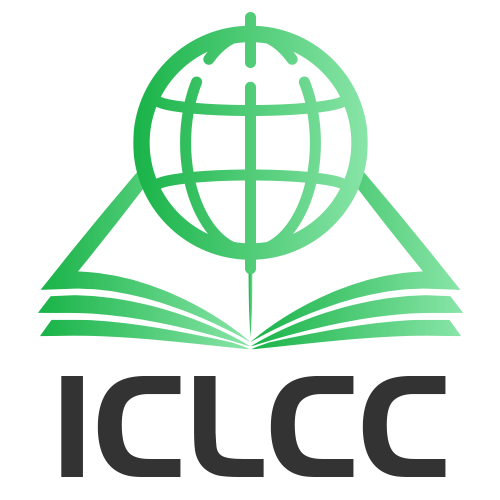
Keynote Speakers

A. Prof. Chew Fong Peng
Faculty of Education, University of Malaya (UM), Malaysia
Research Area:Malay Language and literature education, Chinese language and literature education
Introduction:Associate Professor Dr. Chew Fong Peng is the Centre for Research in Language Education (CRiLE) Chair, Faculty of Education, University of Malaya (UM), Malaysia. She teaches Malay Language Education, Chinese Language Education, and early childhood education programs. She has presented approximately 180 working papers in international and international seminars and conferences in Malaysia and foreign countries, published 9 books, 137 articles published in journals, 71 papers in conference proceedings, 45 chapters in books, 21 translated books including creative writings, 14 edited books, and edited creative writings. She is the book editor of Taylor & Francis, editor for Malaysian Year 4, 5, and 6 History textbooks, and Year 1 Arts and Music Education textbooks. Assoc. Prof. Dr. Chew has completed 31 research projects, 10 of which were led by Chew. She won many medals in the academy and innovative expo, besides being listed in Marquis Who's Who in the World 2011, 2012, 2014, 2015, 2017, 2018, 2019, and 2020. Chew is an article reviewer for established international journals on the Web of Science and Scopus, such as Asia-Pacific Education Researcher, Asia Pacific Journal of Education, SAGE Open, Educational Research and Reviews (ERR), Pertanika: Journal of Social Sciences and Humanities, GEMA Online, etc. Associate Professor Dr. Chew is also a member of the editorial board of 11 national and international journals including the Journal of Contemporary Educational Research, Review of Educational Theory, GATR Global Journal for Business & Social Science Review, and Advisory of International Research and Development Center for Publication (IRDCP). She was invited as a visiting professor at Peking University, China from October 2011 to June 2012.
Speech Title:Factors Influencing the Students' Learning of the Malay Language in Malaysia Independent Chinese Secondary Schools
Abstract:The students in the Malaysia Independent Chinese Secondary Schools (MICSS) have often been described as having generally low achievement in the Malay Language although it is the national language. The low competence in the Malay Language among MICSS students is due to their low interest in the subject. Focussing on the students’ language attitudes, motivation, the teaching of teachers, the learning process in the classroom, family engagement, and the national educational policy, the speaker will shed light on the factors that influence the above variables including regions, gender, level of education of father and mother, family monthly income, and occupations of father and mother. This study selected 4,602 respondents in the study throughout the country divided into five regions. Results indicated that students from East Malaysia (MR = 2601.86) ranked the highest in language attitude, motivation to learn the Malay language, teacher teaching, family engagement, the national education policy and recognition of UEC, and students' interest in learning the Malay language. Regarding gender, the female students showed a higher language attitude, motivation to learn the Malay language, the teaching of the teacher, the national education policy and recognition of UEC, and the interest of students to learn the Malay language. The father’s level of education indicated significant differences in the student's motivation to learn the Malay language, the teaching of the teacher, and family engagement while the mother’s level of education showed differences in the teaching and learning of students in the Malay language and national education policy and recognition of UEC. On the other hand, family's monthly income had significant differences in national education policy and recognition of UEC only. On the other hand, the father’s occupation indicated significant differences in the interest in learning the Malay language. In contrast, the mother’s occupation impacted the students’ language attitudes and interest in learning the Malay language. Therefore, it is suggested the school administrators and teachers consider the above factors in teaching to create a joyful, creative, and interesting teaching and learning environment for the MICSS students to learn the Malay language.

Prof. Budsaba Kanoksilapatham
Faculty of Management Science, Silpakorn University
Research Area:Linguistics and language teaching
Introduction:Budsaba Kanoksilapatham, an eminent luminary, attained her Ph.D. in Linguistics (concentration: Applied Linguistics) from Georgetown University in the United States. Currently, as an erudite full-time professor of English at the Faculty of Management Science at Silpakorn University, she embodies a consummate dedication to her vocation. Furthermore, Dr. Kanoksilapatham adorns the distinguished post of associate fellow at the prestigious Academy of Arts, the Royal Society of Thailand. Her outstanding accomplishments have garnered her an array of coveted accolades, among others, notably including the illustrious titles of “Distinguished Researcher of Silpakorn University” and “TRF Senior Research Scholar in English.” Both accolades were graciously bestowed upon her by the esteemed patronage of Her Royal Highness Princess Maha Chaksri Sirindhorn on two distinct occasions. Dr. Kanoksilapatham’s awe-inspiring achievements, coupled with her profound dedication to scholarly pursuits, serve as a resplendent and indelible tribute to her unwavering quest for, and commitment to, academic excellence.
Speech Title:Academic writing culture of Research Articles: Deciphering the conclusion section using linguistic analysis
Abstract:Research articles (RAs), a type of academic writing, are one of the most significant methods that academics disseminate knowledge. Genre analysis has shown that each of the four RA components—introduction, methodology, results, and discussion, or IMRD—is governed by an organizational structure. This study established the organizational structure of the conclusion section in open-access journals due to its growing popularity. A collection of 55 findings from open-access journals that were named "Articles of the Year" from four academic areas was assembled. Based on certain criteria to ensure the dataset’s comparability, a collection of 25 stand-alone conclusions was anchored on genre analysis, an analysis that identifies two layers of rhetorical structure, namely “move” and “step”. Three moves were discovered along with the corresponding steps, resulting in different organizational patterns, but one that was particularly strong. In addition, the frequencies of occurrence of the three moves and steps contributed to a fully developed two-layer rhetorical structure. The findings show how well-established this section is as well as how it is now organized, fulfilling its vital role of bringing RAs to a close. This study has thus demystified the cultural communication of this academic genre, a skill crucial for scholars to effectively stage convincing arguments in the conclusion section.